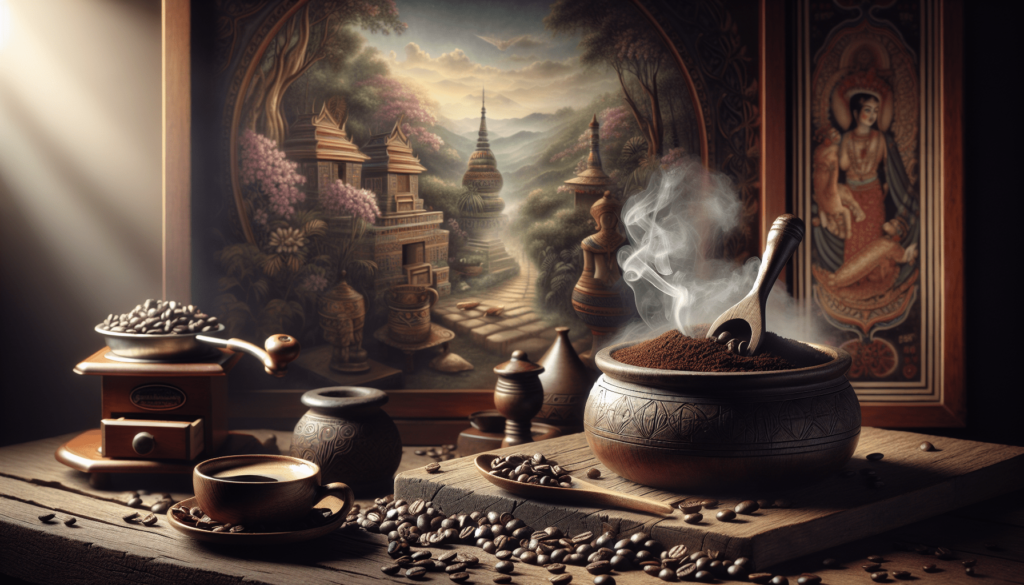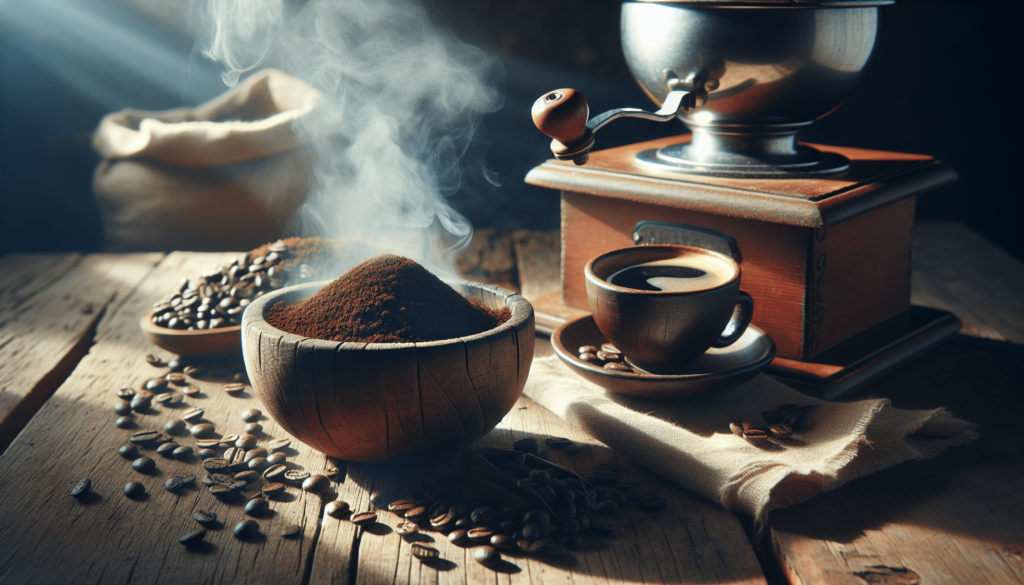How do you make strong flavorful coffee? This question may have crossed your mind, especially if you’re a coffee lover striving to get the most out of every cup. Crafting strong and flavorful coffee is an art that involves far more than just adding an extra scoop of grounds. It’s a meticulous process that takes into account various factors such as the type of beans, grind size, water temperature, and brewing method. Whether you’re just beginning to experiment with your coffee-making skills or you’re a seasoned barista, understanding these elements can elevate your coffee game to a whole new level.
Understanding Coffee Beans
Types of Coffee Beans
There are primarily two types of coffee beans used globally: Arabica and Robusta. Each has its own unique flavor profile and strength characteristics.
- Arabica: Often praised for its smooth and sweet flavor, Arabica beans are less bitter and contain less caffeine compared to Robusta. They are grown at higher altitudes and require more care during cultivation, resulting in higher-quality beans that are often more expensive.
| Bean Type | Flavor Profile | Caffeine Content | Growing Altitude | Price Range |
|---|---|---|---|---|
| Arabica | Smooth, Sweet, Fruity Notes | Less | Higher Altitudes | More Expensive |
| Robusta | Strong, Bitter, Earthy Notes | More | Lower Altitudes | Less Expensive |
- Robusta: Known for its strong, bold, and somewhat bitter flavor, Robusta beans are often used in espresso blends to add a kick. They are hardier plants, growing at lower altitudes, making them more resistant to pests and thus cheaper to produce.
Selecting the Right Beans
To craft a strong and flavorful cup of coffee, start by choosing high-quality beans. Opt for freshly roasted beans, as coffee begins to lose its flavor profile soon after roasting. Look for beans that have been roasted within the last two weeks for optimal flavor.
The Role of Grind Size
Importance of Grind Size
The grind size of your coffee beans affects the flavor, strength, and extraction process. Incorrect grind size can lead to over-extraction or under-extraction, both of which negatively affect the taste.
-
Coarse Grind: Ideal for French press and cold brew methods. A coarse grind allows for a slower extraction process, resulting in a more mellow flavor.
-
Medium Grind: Suitable for drip coffee makers and pour-over methods. A medium grind balances the extraction process and flavor.
-
Fine Grind: Best for espresso machines. A fine grind ensures a quick extraction, which is essential for making a strong espresso.
| Grind Size | Suitable Brewing Methods | Flavor Characteristics |
|---|---|---|
| Coarse | French Press, Cold Brew | Mellow, Smooth |
| Medium | Drip Coffee Maker, Pour-Over | Balanced, Full-Flavored |
| Fine | Espresso Machines | Strong, Intense |
Adjusting Grind Size for Strength
If you prefer a stronger coffee, you can adjust the grind size a bit finer than recommended. This allows for more surface area contact during extraction, leading to a bolder flavor.

Brewing Methods
French Press
The French Press method is a popular choice for those seeking a robust and flavorful cup of coffee. The coarser grind and longer steeping time result in a full-bodied taste.
Steps for French Press
- Boil water and let it cool for about 30 seconds.
- Add coarsely ground coffee to the French press (about 1 gram of coffee per 15-17 ml of water).
- Pour hot water over the grounds and stir.
- Place the lid on and let it steep for about 4 minutes.
- Press the plunger down slowly and pour your coffee.
Espresso
Espresso is a highly concentrated form of coffee, known for its rich flavor and intense strength. It requires a special machine to force hot water through finely-ground coffee at high pressure.
Steps for Making Espresso
- Fill the espresso machine’s portafilter with finely ground coffee (about 18-20 grams).
- Tamp the grounds evenly and firmly.
- Lock the portafilter into the machine.
- Start the machine to force water through the coffee grounds for about 25-30 seconds.
- Collect the espresso shot in a cup.
Pour-Over
Pour-over coffee offers control over every variable in the brewing process, making it possible to achieve a strong and flavorful cup.
Steps for Pour-Over
- Boil water and let it cool slightly.
- Place a filter in the dripper and rinse it with hot water.
- Add medium ground coffee to the filter (about 1 gram of coffee per 15-17 ml of water).
- Pour hot water over the grounds in a circular motion, allowing them to bloom for 30 seconds.
- Continue pouring in stages until you’ve used the desired amount of water.
- Let it drip through and then enjoy your coffee.
Water Quality and Temperature
The Significance of Water Quality
The majority of coffee is water, so its quality can significantly affect the taste. Use filtered water to avoid any unpleasant flavors caused by impurities.
Optimal Water Temperature
Water temperature plays a crucial role in extracting the coffee’s flavors. The sweet spot is between 195°F to 205°F (90°C to 96°C). Too hot, and you might over-extract bitter compounds. Too cold, and you’ll under-extract, leading to a weak and sour cup.
| Temperature (°F) | Temperature (°C) | Effect on Flavor |
|---|---|---|
| <195< />d> | <90< />d> | Under-extraction (weak, sour flavor) |
| 195-205 | 90-96 | Optimal extraction (balanced flavor) |
| >205 | >96 | Over-extraction (bitter flavor) |

Brewing Time and Ratios
Ideal Brewing Time
The time you let your coffee brew affects its strength and flavor. Here’s a quick guide:
- French Press: 4 minutes
- Espresso: 25-30 seconds
- Pour-Over: 3-4 minutes
Coffee-to-Water Ratios
The coffee-to-water ratio is vital for achieving the perfect strength and flavor. A general rule of thumb is to use 1 gram of coffee per 15-17 ml of water for a balanced cup. Adjust this ratio to suit your taste preferences. If you like a stronger coffee, you can go for a 1:14 ratio.
| Brewing Method | Coffee-to-Water Ratio (by weight) | Notes |
|---|---|---|
| French Press | 1:15 to 1:17 | Longer steeping time |
| Espresso | 1:2 to 1:2.5 | Short, intense extraction |
| Pour-Over | 1:15 to 1:17 | Controlled pouring and blooming |
Enhancing Flavor with Additional Ingredients
Spices and Flavorings
Adding spices like cinnamon, cardamom, or nutmeg can elevate your coffee’s flavor profile without compromising its strength. These spices can be added to the coffee grounds before brewing or directly into the cup.
Sweeteners and Creamers
For those who enjoy a touch of sweetness or creaminess, there are endless options to explore. Natural sweeteners like honey or maple syrup can add unique flavors, while dairy or non-dairy creamers can create a rich and smooth texture.
Storage Tips for Freshness
Proper Storage Techniques
Keep your coffee beans fresh by storing them in an airtight container away from light, heat, and moisture. Avoid keeping them in the refrigerator as condensation can affect the beans’ flavor.
Grinding Before Brewing
If possible, grind your coffee beans just before brewing to preserve their freshness and flavor. A good-quality burr grinder can make a significant difference in the grind consistency and, consequently, the flavor of your coffee.
Experimenting and Perfecting
Keeping a Brew Log
Track your experiments by keeping a brew log. Documenting the type of beans, grind size, water temperature, brewing method, and ratios used can help you identify what works best for your taste buds.
Tasting Notes
Take notes on each brew’s flavor profile, noting any nuances in taste, aroma, and strength. This will guide you in fine-tuning your coffee-making process.
Troubleshooting Common Issues
Bitter Coffee
If your coffee tastes bitter, it could be due to over-extraction or using water that’s too hot. Try coarsening the grind size or lowering the brewing temperature.
Weak Coffee
For weak coffee, the issue might be under-extraction or insufficient coffee grounds. Use finer grinds or increase the coffee-to-water ratio.
Sour Coffee
Sour coffee is usually a result of under-extraction or too low brewing temperatures. Try using a finer grind size and ensure your water is within the optimal temperature range.
Conclusion
Crafting strong and flavorful coffee is both an art and a science. By understanding and controlling the various factors involved—such as the type of beans, grind size, water quality, and brewing method—you can elevate your coffee-drinking experience to a new level. Whether you prefer the bold intensity of an espresso or the balanced richness of a French press, these tips and techniques will guide you in making each cup a masterpiece. So, take your time, experiment, and enjoy the process of crafting the perfect cup of coffee tailored to your taste.
